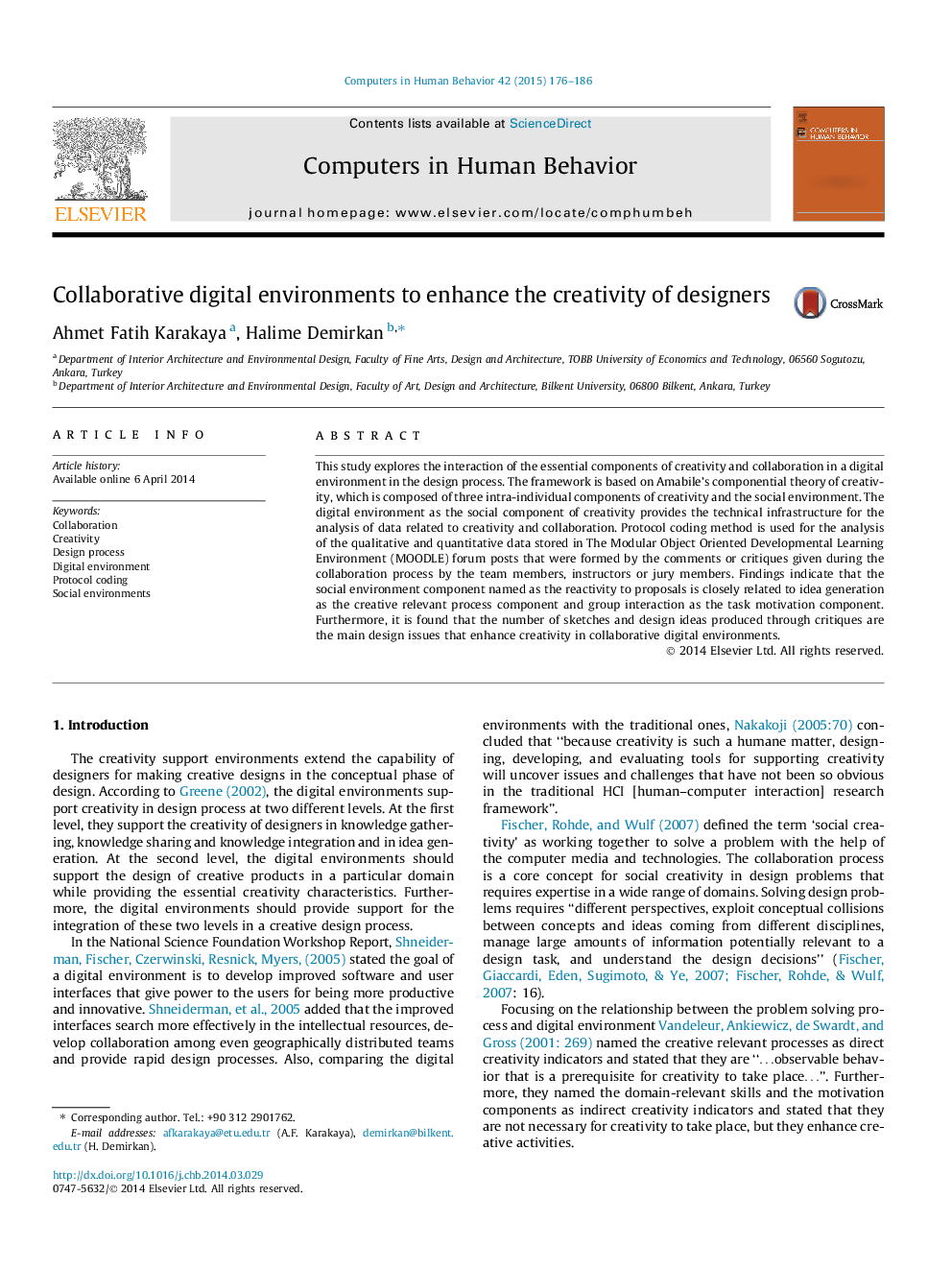| کد مقاله | کد نشریه | سال انتشار | مقاله انگلیسی | نسخه تمام متن |
|---|---|---|---|---|
| 350291 | 618441 | 2015 | 11 صفحه PDF | دانلود رایگان |
• Creativity components in a collaborative digital design education environment.
• Analysis of process, skills and task motivation in a digital social environment.
• Protocol coding method for the analysis of the qualitative and quantitative data.
• Correlations among the individual and social creativity environment components.
This study explores the interaction of the essential components of creativity and collaboration in a digital environment in the design process. The framework is based on Amabile’s componential theory of creativity, which is composed of three intra-individual components of creativity and the social environment. The digital environment as the social component of creativity provides the technical infrastructure for the analysis of data related to creativity and collaboration. Protocol coding method is used for the analysis of the qualitative and quantitative data stored in The Modular Object Oriented Developmental Learning Environment (MOODLE) forum posts that were formed by the comments or critiques given during the collaboration process by the team members, instructors or jury members. Findings indicate that the social environment component named as the reactivity to proposals is closely related to idea generation as the creative relevant process component and group interaction as the task motivation component. Furthermore, it is found that the number of sketches and design ideas produced through critiques are the main design issues that enhance creativity in collaborative digital environments.
Journal: Computers in Human Behavior - Volume 42, January 2015, Pages 176–186
